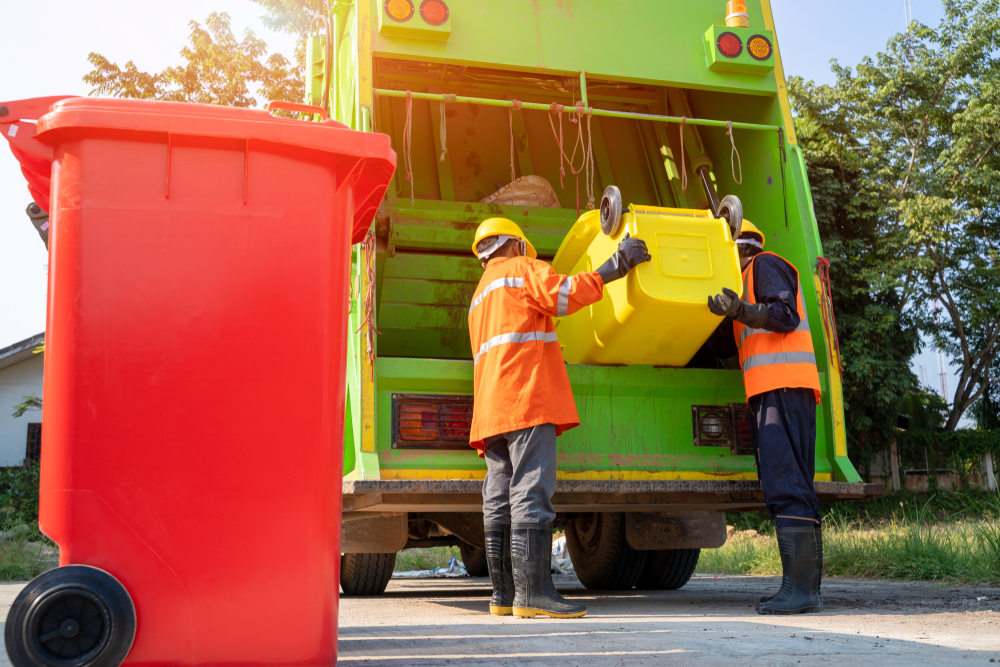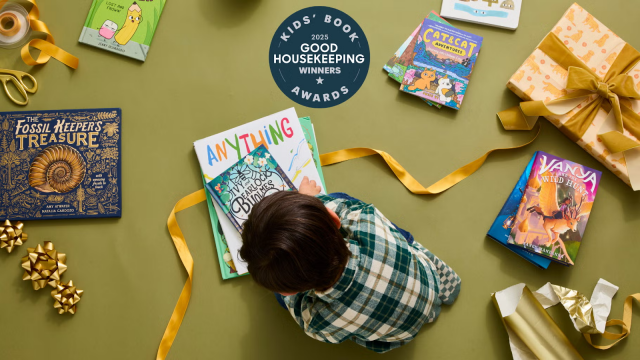Trash Talk and Recycling for Kids
- April 17, 2023
- By Robin Koontz
Trash Talk and Recycling for Kids
In this post, Robin Koontz, author of Composting: Nature’s Recyclers, talks trash. Use this background on waste management as a jumping off point for class discussions surrounding America Recycles Day, Earth Day, or any time of the year. Hopefully, it will spark some interest in becoming more conscious about what kids toss.

Wherever they go, humans leave garbage behind. In America, the average person throws away over a thousand pounds of waste each year. Is it the same around the world? How do people in other countries deal with their refuse? After all, trash is one thing that we all have in common.
It is thanks to our collective garbage that we have the Bubonic Plague, typhoid fever, cholera and all kinds of nasty bacterial diseases such as malaria and dysentery, with new ones popping up every day, such as SARS. Garbage continues to feed vermin and hosts a multitude of disease-spreading insects. Garbage has polluted our oceans, waterways, and aquifers. Garbage has contaminated our land and contributed to global climate change. We not only all have garbage in common, we have the ill effects of it to share as well.
Ask kids why people throw things away. Why are some cultures more wasteful than others? It’s an interesting study. For example, communities of men, women, and children in a multitude of places like Indonesia, India, Nicaragua, Cambodia, and South Africa dig through giant masses of refuse with bare hands, searching for recyclables to sell. An excellent website about the plight of these people can be found on “Trash by Andy Mulligan.” Perhaps your classroom or school will be encouraged to host a Trash Sale or other related event to raise money for one of these communities and to raise local awareness.
A lot of consumer-generated waste from wealthier countries consists of throw-away products and electronics that are replaced every other year. In third world countries, people don’t tend to waste as much and seldom have the luxury to throw away anything tangible. Yet they also have a huge waste disposal problem. How did that happen? Have the kids read and discuss hazardous waste shipping and illegal dumping. It’s not pretty.
Meanwhile, what happens to other garbage around the world? Other than tossing in landfills, what to do with garbage has been a human concern for hundreds of years. Perhaps surprising to some, recycling/repurposing can be traced back through history. Turn your kids loose on subjects such as paper manufacturing, methane production, pig farming with waste, swampland reclamation, metal fabrication, glass production, and eco-friendly products. Did you know that there are jeans made out of recycled plastic and wood? See what else they discover that innovative people around the globe are doing with the waste that we all produce, now and in the past.
To note, about 20% of human waste is food. Hundreds of millions of people have little or nothing to eat, yet the world wastes about 1.4 billion tons of food, about a third of what we produce, every year! It is wasted in the field, it decays in trucks and warehouses, it expires in stores, it molds in our refrigerators… and finally it rots in our landfills. The cost of food waste, just in the U.S., is about $165 billion a year.
All that rot is creating greenhouse (methane) gases. Reducing greenhouse emissions is one of the Environmental Protection Agency’s biggest priorities in their battle against climate change. Meanwhile, all that waste is using up precious water, forests, and land. What kinds of efforts are being made to rescue the earth’s resources from human waste?
Rice and other cereals have the highest carbon impact of any food, even more than meat. They emit methane as the plants decompose in flooded fields called paddies. Meanwhile, the U.S., Europe and Latin America are notorious for wasting meat. Raising livestock for food has a tremendous impact on the climate, land, and water.
It’s pretty obvious that if we make better use of the food we raise and grow, more people will eat and the environment will benefit. Trash Talk and Recycling for Kids
There is little doubt that garbage is a world issue that affects every culture. The ways that people are globally dealing with an ever-growing problem are fascinating and eye-opening. How can kids help? Start with discussion, then come up with plans of action. Here is a site with lots of experiments, information about recycling for kids, and projects about waste management:
http://www.juliantrubin.com/fairprojects/environment/waste_management.html
Meanwhile, here are a few examples of new ways garbage is being put to use:
• Sweden is converting about 96% of its trash into renewable energy. They even acquire trash from other countries because they don’t have enough!
• The piles of seeds, skins, and seeds from making wine or grape juice is called pomace. Scientists are studying its properties as a food preservative, meanwhile pomace is being dried and turned into a substitute for flour! It comes in different flavors depending on the grapes used to make it.
• Food waste recycling into compost is nothing new. The original fish fertilizer was a real fish, or the skin and bones after someone ate the fish. But how about a high-rise composting project? A number of cities including New York, Seattle, and San Francisco have huge successful food recycling programs. In some countries like Austria, organic waste collection is not optional, it is required.
• The Charlotte Douglas International airport is the first airport to set up a gigantic worm compost to deal with all the food garbage generated by its customers, along with a well-organized recycling operation.
• The nonprofit group called The Climate Group, along with Starbucks Hong Kong, are turning used coffee grounds and bakery items into fertilizer, plastics, and biofuels.
• Some stores and restaurants around the world, with help from their communities, are working to get unwanted food to the needy. Called “food reclaiming,” organizations such as Last Minute Market in Italy work with farmers, processing plants, and food sellers to reclaim and donate food that isn’t sold, such as “ugly vegetables.”
• In Cateura, Paraguay, a group of kids who lived on a huge landfill started making instruments out of discarded things like cans, bowls, and utensils. Their project was featured in a documentary called Landfill Harmonic. The money they earn is helping them to escape their lives in the dump.
• Freshkills Park was once the world’s largest landfill. The 2,200 acre park in New York City is being transformed into a ecological restoration that will emphasize “environmental sustainability and a renewed public concern for our human impact on the earth.” Kids can read about the park on http://www.nycgovparks.org/park-features/freshkills-park. It’s pretty cool.
So, that’s a lot of trash talk. I hope it sparks some interesting discussions and projects for your classroom!
Trash Talk and Recycling for Kids Kids Discover Kids Discover Online

Kids Discover Talks with Book Editor Karen Cicero about Good Housekeeping’s 2025 Kids’ Book Awards
- December 22, 2025

Kids Discover Talks with Television Lighting Designer Christopher Landy About the Rockefeller Center Christmas Tree Lighting
- December 9, 2025

It’s the Most Wonderful Time of the Year… For Community Service Projects!
- December 8, 2025